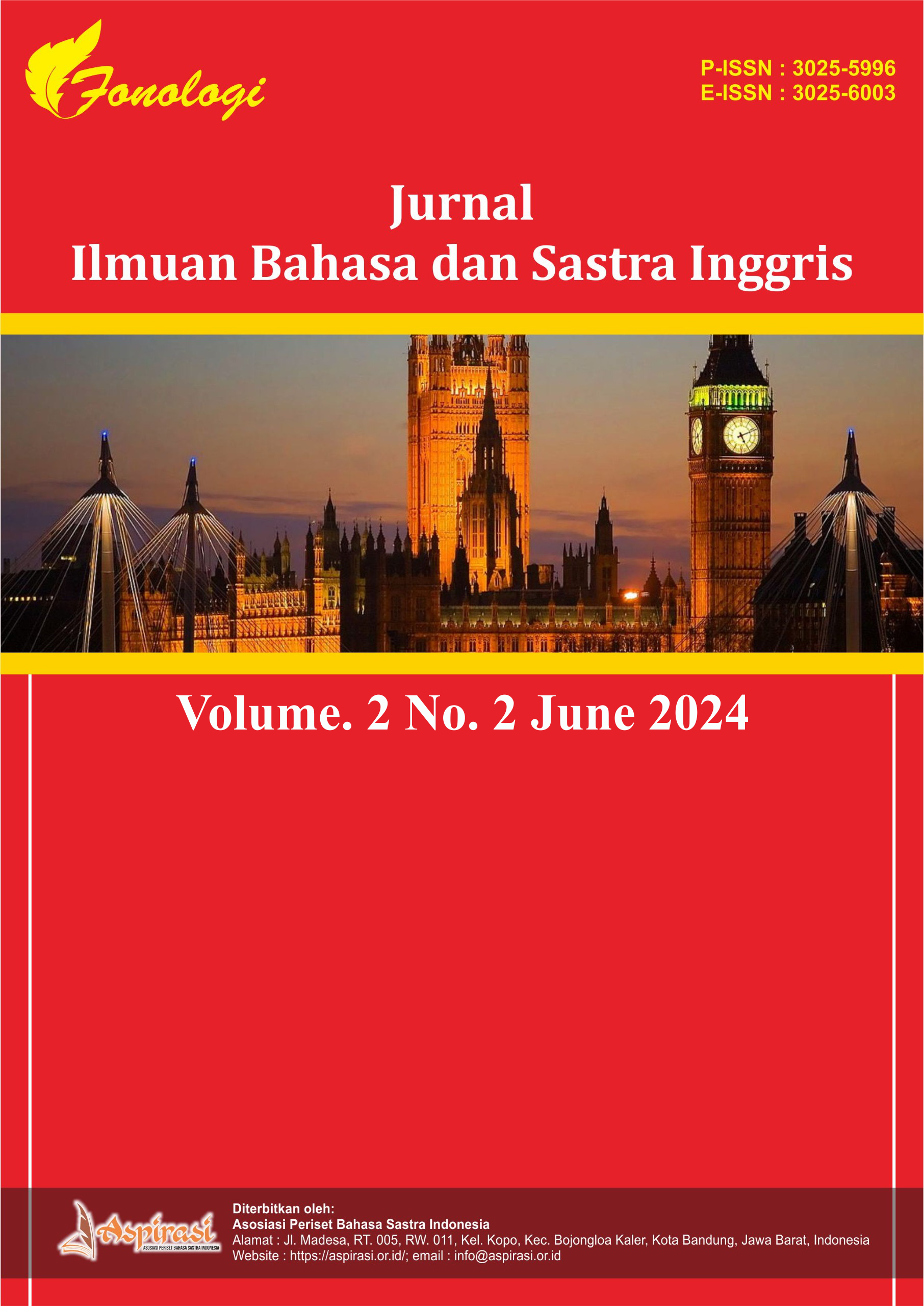How Does Canva Application Effect Students’ Writing Skills on Narrative Text for The Tenth Grade of SMAN 1 Kesamben
DOI:
https://doi.org/10.61132/fonologi.v2i2.602Keywords:
Canva, Writing Skill, Narrative TextAbstract
This research aims to find out the effectiveness of the Canva application in improving students' writing skills in narrative texts in class X-A with a total of 30 students at Sman 1 Kesamben. The design of this research is Pre Experimental using One Group Pretest-Posttest. In One Group Pretest-Posttest there are 3 steps, first the researcher gives a pre-test, then carries out treatment, and after treatment the researcher gives a post-test. To obtain data the author used a test, before the test was tested on students, a trial test was carried out at the same level to determine the reliability and validity of the test. Data analysis techniques use SPSS version 23. The results of this study show that the average pre-test score is 69 and the average post-test score is 82, this shows that the post-test score and average are better than the pre-test. Apart from that, the t-test result showed that the score was sig. (2-tailed) <0.05 means there is a difference between the scores from the pretest and posttest. This means that the hypothesis will not be rejected and the alternative hypothesis will be accepted, which can be interpreted as meaning that there is a significant influence of using Canva on the writing skills of class X-A students at SMAN 1 Kesamben. Based on the results of this research, it is recommended for teachers to use the Canva application in learning English, especially writing skills so that students can learn easily and have fun. Apart from that, it is recommended for future researchers to research the use of the Canva application in learning with other topics to find out students' or teachers' responses to using the Canva application.
Downloads
References
Alisha, F., Safitri, N., Santoso, I., & Siliwangi, I. (2019). Students’ difficulties in writing EFL. Professional Journal of English Education, 2(1), 20–25.
Al Khoeri, A. F., Nuraini, W., Ramdani, R., & Agum, S. (2021). The implementation of Canvas to enhance english teaching and learning. Connects Proceedings.
Al-Rawahi, N. M. & Al-Balushi, S. M. (2015). The Effect of Reflective Science Journal Writing on Students’ Self-Regulated Learning Strategies. International Journal of Environmental & Science Education. 10(3).
Anwar, K. (2021). The Perception of Using Technology Canva Application as a Media for English Teacher Creating Media Virtual Teaching and English Learning in Loei Thailand. Journal of English Teaching, Literature, and Applied Linguistics, 5(1), 62-69.
Bull, S., & Ma, Y. (2001). Raising learner awareness of language learning strategies in situations of limited resources. Interactive Learning Environments, 9(2), 171–200. Buzan, T. 1960. Mind Mapping, (Online), (http://www.tonybuzan.com Accessed 31 May 2017).
Buzan, T. 2006. Learning Skills: Mind Mapping: Mind Mapping. Whole Brain Note Taking.Uses Both Sides of Your Brain to Study Subjects Usually Only Studies with Your Left Brain. Buzan, T. 2009. Mind Mapping, (Online), (http://www.tonybuzan.com, Accessed 31May 2017). 56
Byrne Donny. 1990. Teaching Writing Skill. New York Longman Chris, M. 2015. Here are the Key Elements of A Mind Map:Brain Director, (Online), (http://www.braindirector.com>here-are-the-key–of-a-mindmap, Access 04 June 2017).
Creswell, John W. Planning, Conducting, and Evaluating Quantitative and Qualitative Research, Educational Research. 4th ed. Boston: Pearson Education, 2012. Franco-Camargo, L. F., & Camacho-Vásquez, G. (2018).
The impact of wikis & videos integration through cooperative writing tasks processes. English Language Teaching, 11(5). doi: 10.5539/elt.v11n5p116. Gehred, A. P. (2020). Canva. Journal of the Medical Library Association: JMLA, 108(2), 338.
George Braine and Claire May. Writing from Sources: A Guide for ESL Students. California: Mayfield, 1996. Hadi, Muhamad Sofian, Lidiyatul Izzah, and Qondila Paulia. ―TEACHING WRITING THROUGH CANVA APPLICATION TO ENHANCE STUDENTS‘ WRITING PERFORMANCE,‖ n.d., 8. Gilakjani, A. P. (2012).
Smaldino, S. E., Lowther, D. L., Mims, C., & Russell, J. D. (2015). Instructional technology and media for learning. NY: Pearson. Sugiyono. Metode Penelitian Kuantitatif, Kualitatif, Dan R & D. Bandung: Alfabeta, 2003.
W. Creswell, John. Educational Research: Planning and Conducting Quantitative and Qualitative Research. Boston: Pearson Education, 2012.
Widia Wahyuni, M.Pd. ―A DIGITAL PRACTICAL APPLICATION IN TEACHING FUNCTIONAL TEXT; CANVA.‖ Journal of International Conference On English Across Culture, no. ISS 97-602-6428-40-0 (2018)
Yundayani A., Susilawati, C. (2019). INVESTIGATING THE EFFECT OF CANVA ON STUDENTS WRITING SKILLS. STKIP Kusuma Negara. Yuliana. (2016). Improving Students’ Reading Skill Through Short Story. 2016.
Downloads
Published
How to Cite
Issue
Section
License
Copyright (c) 2024 Fonologi : Jurnal Ilmuan Bahasa dan Sastra Inggris

This work is licensed under a Creative Commons Attribution-ShareAlike 4.0 International License.





